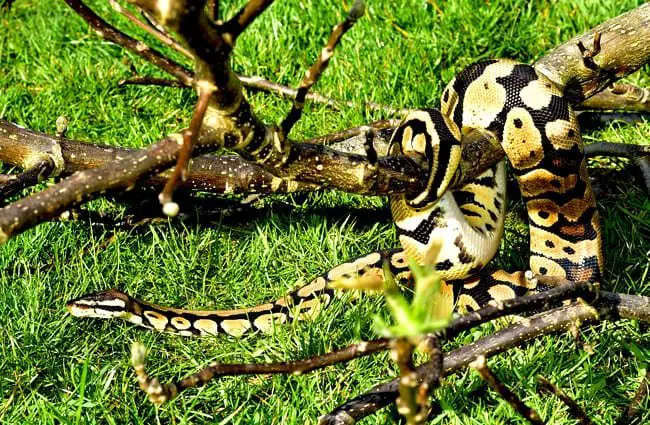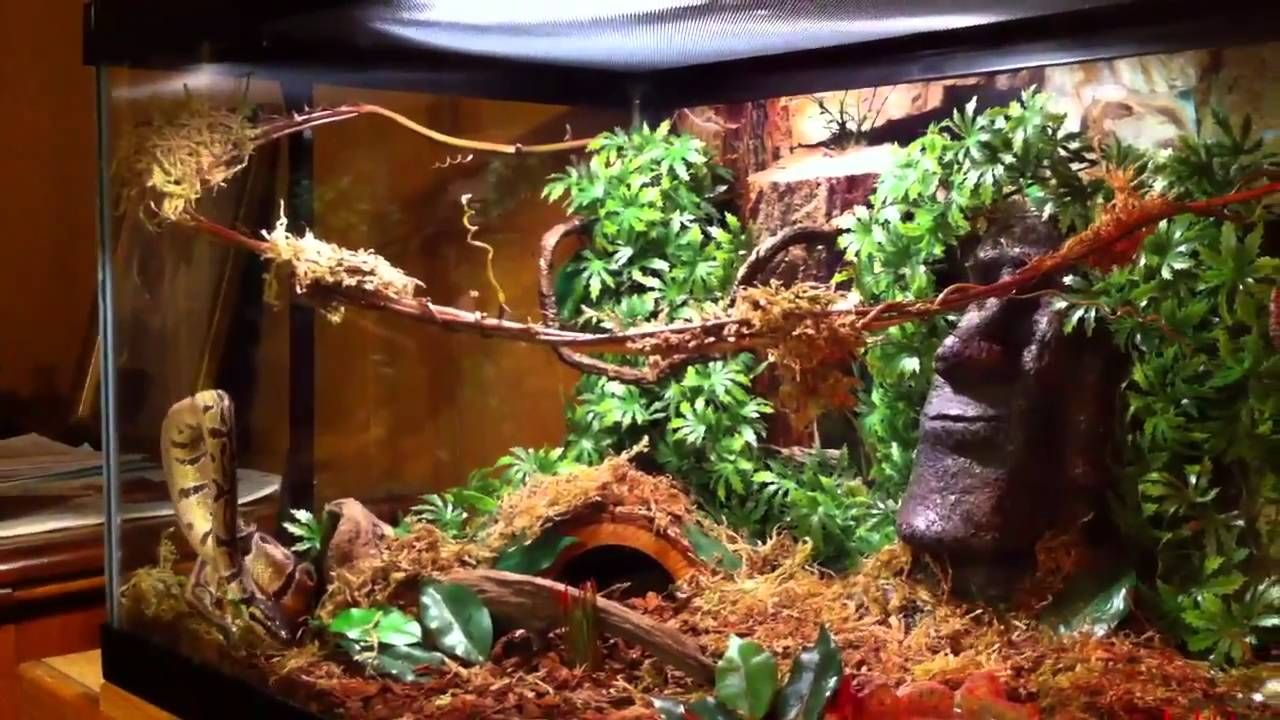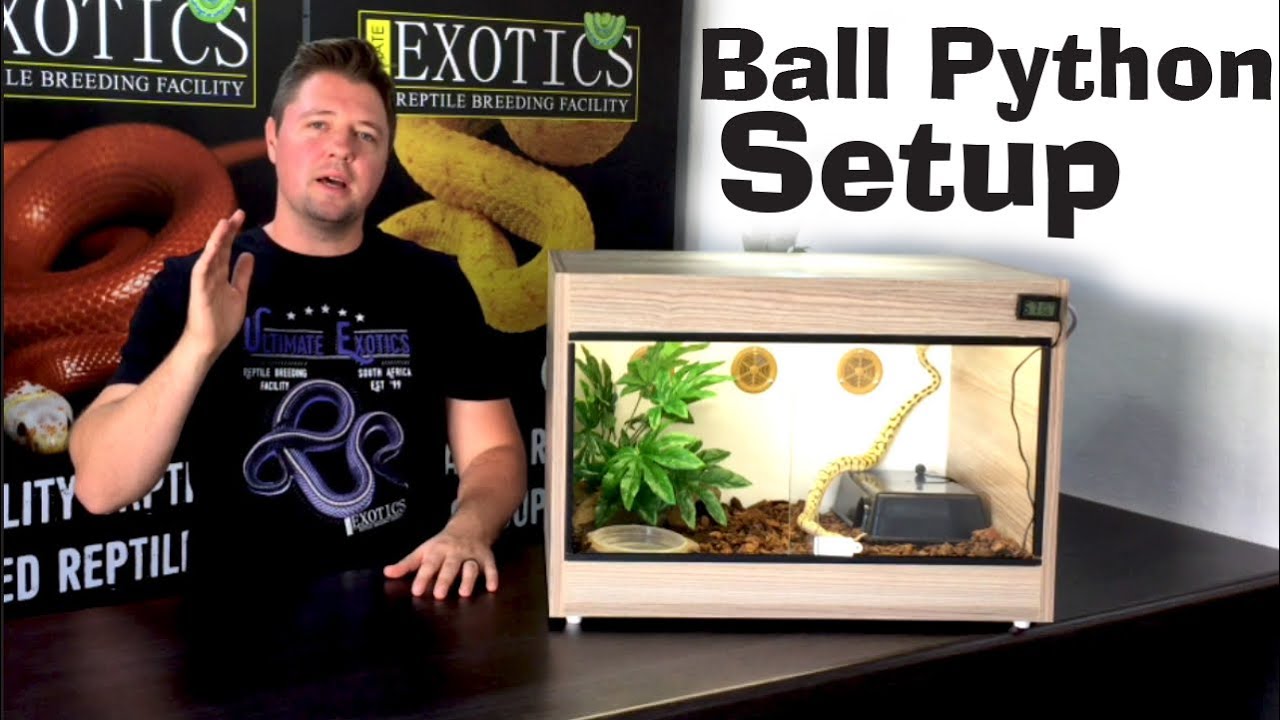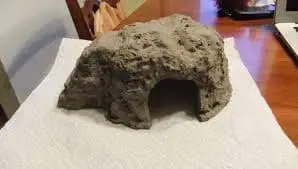Are you looking for a pet reptile that can live with you for a long time? Then a ball python is indeed the perfect choice! This snake is ideal for newbies as well as hobbyists wishing to expand their collection.
They’re also gorgeous creatures that come in various lovely color variants. However, to ensure that your ball python has a great lifestyle, you must provide it with the best possible care. Along with taking care of the ball python diet, take care of their habitat. In this article, we’ll go through the most crucial considerations to follow while choosing and preparing your ball python’s habitat. We’ll also talk about the habitat’s humidity, temperature, and lighting as the must-haves in the enclosure.
But first, we’ll glance at the ball python’s native environment because it will provide you with a general idea about the habitat of ball pythons.
Ball Python Natural Habitat
Ball pythons exist in western and central Africa, close to the north of the equator. They live in meadows, open woodlands, and locations with moderate shelter. They are found near the water area to cool themselves in warm temperatures.

They spend most of their time in holes or underground. However, they can ascend back to ground whenever they want to. They are mostly nocturnal and only visible during the monsoon season.
This snake is easily spotted; nevertheless, extreme caution should be exercised to guarantee that you are not assisting an illegal pet industry and only acquire captive-bred pythons.
Pet Ball Pythons are easy to handle, have a friendly demeanor toward people, and are normally in good health. Your responsibility is to keep your pet ball python comfortable in its enclosure.
Ball Python Habitat Setup
The first factor you’ll need to offer for your ball python is an appropriate enclosure. There are numerous enclosures to select from, each with advantages and disadvantages.

Aquaria Made up of Glass
Glass aquariums are widely accessible and reasonably priced. They also provide unrivaled visibility, making it easy to see your python pet from a glass aquarium.
On the other hand, Aquaria are rather fragile and can be tough to shift in any direction. Furthermore, glass tanks do not trap heat effectively.
Commercially Produced Enclosures
Commercially built snake cages are typically the best selection for ball python caretakers.
Commercial cages are often composed of lightweight plastic, have front-opening windows, and are intended to accommodate warming systems.
Plastic Storage Containers
Plastic storage containers, both inexpensive and lightweight, plastic storage containers can create ideal ball python homes.
They’re also widely available at larger retailers and shops. Unfortunately, because they are often transparent, they do not allow a good picture of your pet.
Size of The Aquarium:
Whatever cage-style you choose, you must check that it has adequate space for your pet. The size of an adult ball python’s habitat is a fierce matter of contention among caretakers, but overall, mature ball pythons need about 3 to 6 square feet of room. Baby ball pythons usually occupy a portion of this area
( i.e, 10-20 gallon tank).
Python Habitat Constructions:

Substrate– Substrate options include paper-based habitat, reptile rugs, wild bedding, and Aspen wood shavings. If Aspen is used, it must be replaced regularly to avoid damp or filthy. Pine and cedar should not be used as bedding since they include oils that might lead to discomfort for your ball python.

Décor- Decorate a hiding spot for your ball python. While choosing, go for hideaways that are made of synthetic or real wood as they are often preferred. These hiding spots also allow your ball python to adjust its body heat by stepping away from a concentrated basking zone.
The size of the concealing log should be big enough to accommodate your snake. Hides will need to be enlarged as your ball python develops. Ball pythons enjoy climbing, so offering ascending branches are excellent entertainment.
Plants and backdrops can be added to enhance the appearance of the environment.
Lighting- While ball pythons are nocturnal, they prosper from UV sun intensity throughout the day. Every day, supply 8-12 hours of light.
UVA/UVB lighting has been demonstrated to increase the body’s ability and encourage healthy and normal behavior in all reptiles. Don’t leave a bright flash on all the time; instead, use a nocturnal light at night.
Temperature- Ball pythons require rather high temperatures, like those seen in their native environment. Therefore, you should always offer a heat gradient for reptiles. This will show them access to a wide variety of temperatures at any given moment.
It is advised that the heated end has an ambient temperature of 95°F and the cold lot has a temperature gradient of 78°F. O over the tank, a basking bulb with a heating bulb should be used to produce warmth.
Temperatures in the aquarium should be checked regularly using at least 2 thermometers (one in the chilly section and the other in the basking section).
Humidity- Snakes require adequate humidity levels to stay healthy. They will have difficulties shedding correctly if maintained excessively dry and may get dehydrated.
On the other hand, snakes handled in very humid conditions may acquire potentially deadly skin disorders. Excessive humidity in either way might also lead to respiratory illnesses.
Ball pythons enjoy relative humidity levels ranging from 50% to 60% because it’s a bit damper; you’ll probably need to sprinkle your pet’s environment moderately with room-temperature water every day.
You may also enhance the humidity by adding water to the substrate or expanding the size of the water dish.
If your ball python’s environment is excessively wet, you should reduce the humidity and dry out the cage a little.
The easiest method to achieve this is to increase the ventilation available. You may also experiment with making the water dish smaller.
How to Clean The Habitat of Ball Pythons?
Weekly, properly clean and sanitize the habitat:
- Set up a separate stable and sound temporary shelter for your snake.
- Brush the aquarium and its contents with a reptiles’ habitat cleanser or a 3% bleach mixture. To guarantee disinfection, let the bleach mixture be in the container for 10 minutes before rinsing it off. If you’re using an industrial cleaner, make sure to follow the manufacturer’s directions.
- Thoroughly wash with water to remove any residues of bleach or cleaning odor.
- Before reintroducing your ball python to its home, thoroughly dry the aquarium and decorations and replace them with a clean substrate.
Now It’s Your Turn to Carry Out The Instructions!
Henceforth, providing a decent habitat for a ball python isn’t too challenging. Simply start with a properly sized container, heat the environment adequately, and select a nice substrate.
With a few hiding places, a water container, and a thermometer, you’ll have an environment that will maintain your ball python happier and healthier for years.
FAQ’s
In three years, a ball python will reach adulthood. A grownup should be placed in an aquarium big enough for them to spread out completely. The least suggested tank size for a mature ball python is a 40-gallon breeding tank.
Pythons like warm, rainy regions in Asia, Africa, Oceania, and Australia. According to the San Diego Zoo, several species flourish in tropical rainforests, but pythons also dwell in grasslands, woods, marshes, rocky outcrops, beaches, and bushes.
Because of their sluggish metabolism, ball pythons may go weeks or months without feeding, although they frequently fall unwell when they do.
If your snake skips more than a few feeding rounds in a row, particularly if it is not shedding at the moment, it should be examined by a veterinarian.
If disturbed, any snake can attack. Ball pythons are typically gentle and do not mind being handled. However, like other snakes, they may attack if they are unwell or nervous, feel threatened, or perceive your hand as a feed ingredient.
This can occur during shedding seasons when the eyelids can impair their eyesight.
About The Author








